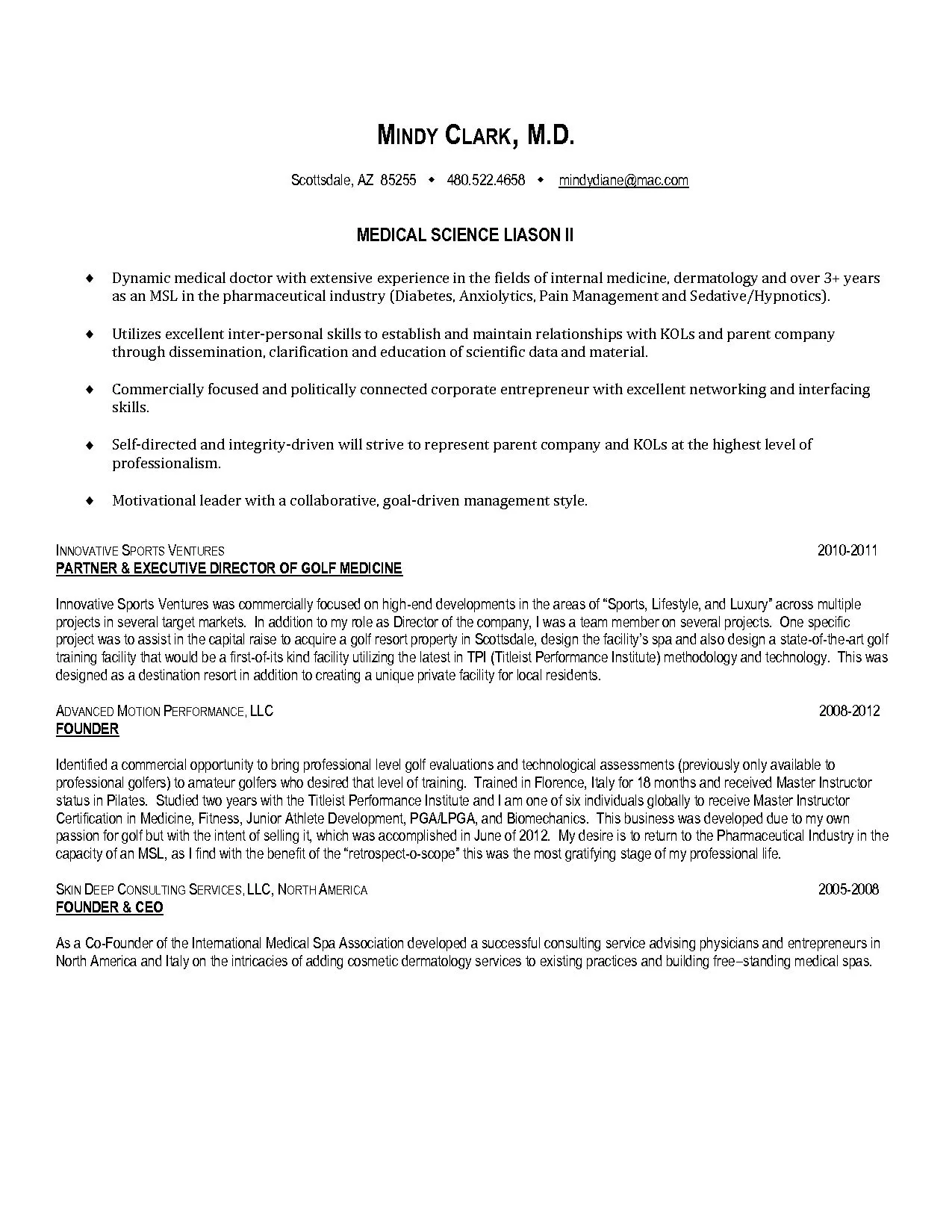Understanding the Physician Cover Letter
A physician cover letter is more than just a formality; it’s your first opportunity to make a strong impression on a potential employer. This document serves as a personal introduction, allowing you to showcase your qualifications, experience, and personality beyond what a resume can convey. Unlike a resume, which provides a factual overview, the cover letter allows you to articulate your career goals and explain why you’re the perfect fit for the specific position. A well-crafted cover letter demonstrates your communication skills and your genuine interest in the opportunity. It’s your chance to tell a compelling story about why you’re the ideal candidate and what you can bring to the organization. It’s the first chance to highlight your unique selling points and to make a lasting impression. Consider it your personal sales pitch, designed to get you an interview.
Why a Cover Letter is Crucial for Physicians
In the competitive world of healthcare, a cover letter can be your secret weapon. It sets you apart from other applicants by providing context to your resume. Physicians often have extensive qualifications and experience, and a cover letter helps employers quickly understand how your skills align with their specific needs. It demonstrates your attention to detail and your commitment to the application process, signaling to the hiring manager that you’ve taken the time to understand the role and the organization. Moreover, a cover letter allows you to address any potential gaps in your experience or explain unique circumstances. It also gives you an opportunity to showcase your personality and passion for medicine, elements that a resume alone can’t capture. A well-written cover letter can significantly increase your chances of getting an interview and ultimately landing your dream job.
What to Include in Your Physician Cover Letter
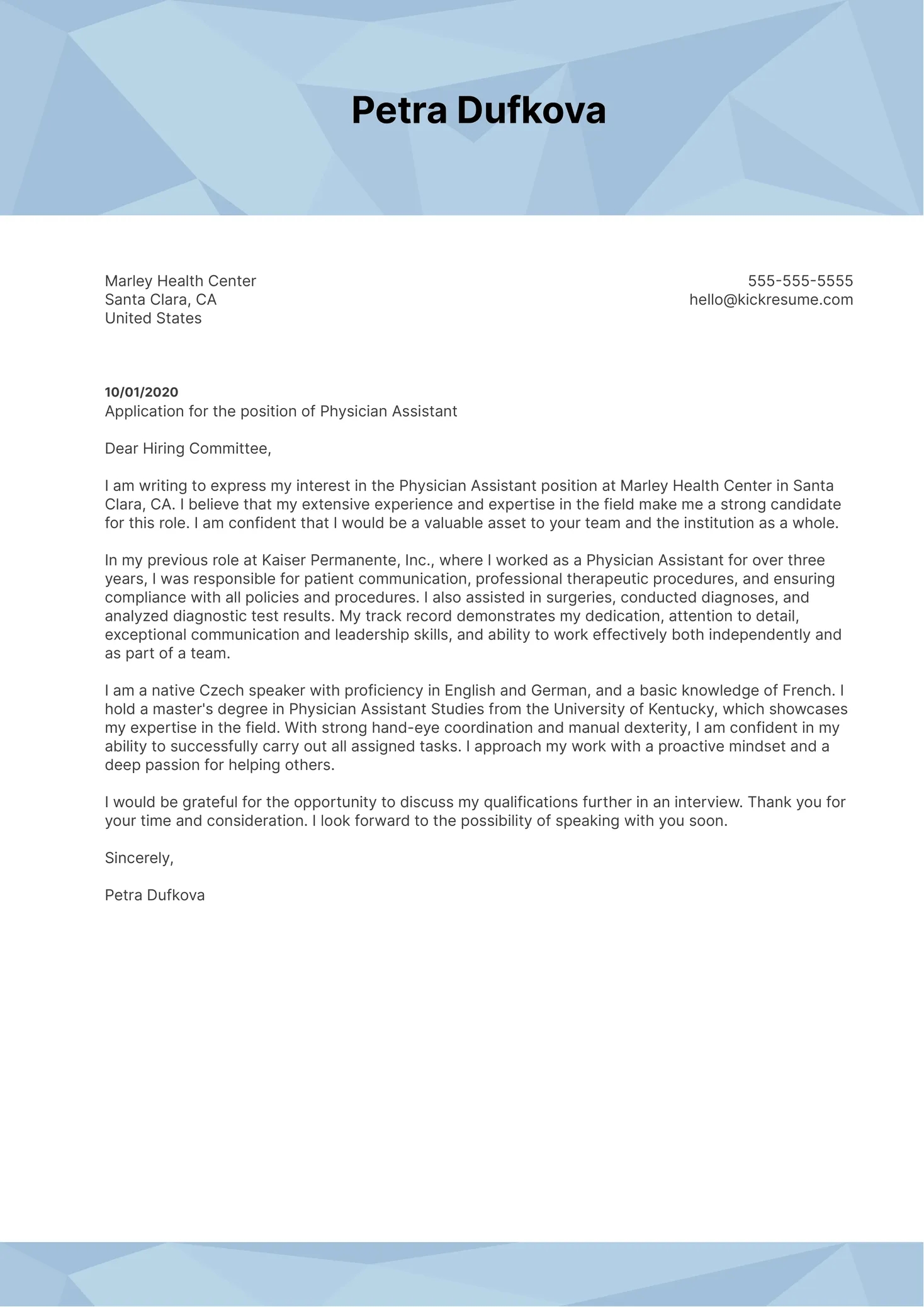
A physician cover letter should include several key components to ensure it effectively communicates your qualifications and enthusiasm. Start with a professional heading that includes your contact information and the date. Address the letter to the hiring manager by name, if possible, showing that you’ve done your research. The opening paragraph should clearly state the position you’re applying for and how you found the opportunity. In the body of the letter, highlight your most relevant skills, experience, and achievements, aligning them with the requirements of the job. Provide specific examples to demonstrate your abilities and quantify your accomplishments whenever possible. Discuss why you’re interested in the specific organization and what you hope to contribute. End with a strong closing paragraph reiterating your interest and thanking the hiring manager for their time and consideration. Ensure you include a call to action, such as expressing your availability for an interview.
Highlighting Your Skills and Experience
When highlighting your skills and experience, it’s crucial to focus on what makes you stand out. Review the job description carefully and identify the key skills and qualifications the employer is seeking. Then, use your cover letter to demonstrate how your experience aligns with those requirements. Provide concrete examples of your accomplishments, using the STAR method (Situation, Task, Action, Result) to illustrate your capabilities. For example, describe a situation where you successfully managed a complex medical case, the task you were assigned, the actions you took, and the positive results you achieved. Quantify your achievements whenever possible. Instead of saying “improved patient outcomes,” say “improved patient outcomes by 15%.” Emphasize your relevant skills, such as diagnostic abilities, communication skills, patient management, and leadership experience. Tailor your examples to the specific needs of the position, showing the employer how you can contribute to their team.
Tailoring Your Cover Letter to the Job
Generic cover letters often fall flat. To increase your chances of success, personalize each cover letter to the specific job and organization. Carefully read the job description to understand the employer’s needs and priorities. Use keywords from the job description throughout your letter to demonstrate that you understand the requirements. Address the specific needs of the organization and explain how your skills and experience align with those needs. Show that you’ve researched the organization and are genuinely interested in their mission and values. Mention specific aspects of the role that appeal to you and explain why you are particularly interested in the position. Tailoring your cover letter demonstrates that you’ve taken the time to understand the opportunity and that you’re genuinely interested in joining their team. This attention to detail can significantly increase your chances of securing an interview.
Researching the Employer and the Role
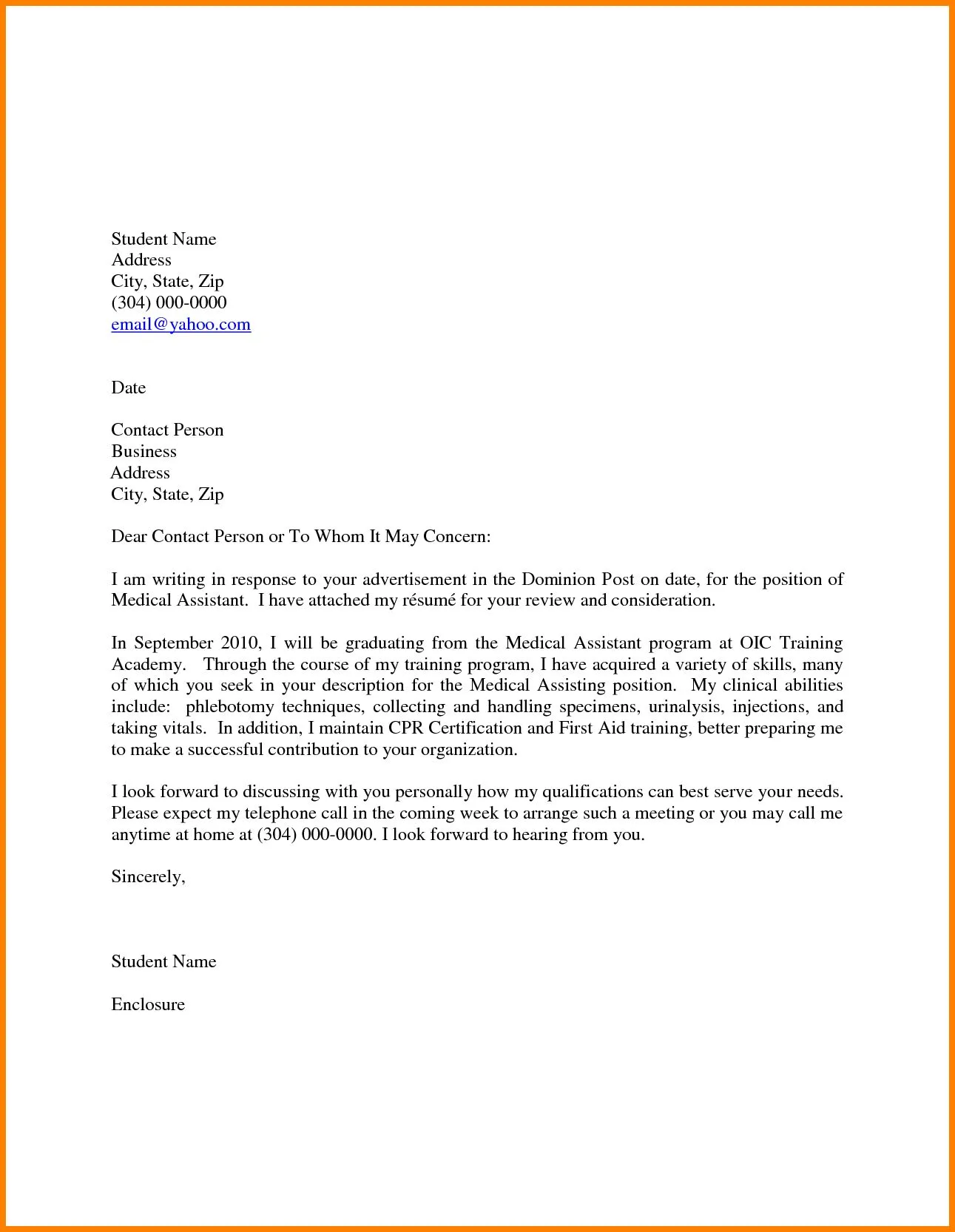
Before you start writing your cover letter, conduct thorough research on the employer and the role. Visit the organization’s website to learn about their mission, values, and recent achievements. Understand the specific responsibilities and expectations of the position. Explore the organization’s social media presence and online reviews to gain insights into its culture and work environment. If possible, reach out to current or former employees to learn more about their experiences. This research will help you tailor your cover letter and demonstrate your genuine interest in the opportunity. Understanding the employer’s needs and priorities allows you to highlight the skills and experiences most relevant to the role. Showing that you’ve taken the time to research the organization demonstrates your commitment and attention to detail, making a positive impression on the hiring manager. The more you know, the better you can align your qualifications with their needs.
Showcasing Your Achievements and Credentials
Your cover letter should be a showcase of your accomplishments and credentials. Don’t just list your responsibilities; highlight your achievements. Use specific examples to demonstrate how you’ve made a positive impact in previous roles. Quantify your accomplishments whenever possible. For instance, mention the number of patients you’ve successfully treated, the percentage improvement in patient satisfaction scores, or the successful implementation of new medical protocols. Include details about your board certifications, licenses, and any specializations or fellowships. Highlight any awards, honors, or publications you’ve received. Mention any leadership roles you’ve held, such as chief resident or medical director. Tailor your examples to the specific requirements of the job, showcasing the skills and experiences that are most relevant to the employer. Make sure your achievements are clear, concise, and easily understandable to the reader.
Formatting Your Physician Cover Letter
The formatting of your physician cover letter is just as important as its content. Use a professional font, such as Times New Roman, Arial, or Calibri, in a readable size (11-12 points). Use a standard one-inch margin on all sides. The letter should be no more than one page in length. Keep your paragraphs concise and well-structured, using clear and concise language. Use bullet points to highlight key skills, achievements, or qualifications. Ensure proper grammar, spelling, and punctuation throughout the document. Use headings and subheadings to organize your content and make it easy to read. Break up large blocks of text with white space to improve readability. Make sure your letter is visually appealing and easy to scan. A well-formatted cover letter demonstrates your attention to detail and your commitment to professionalism. Proofread the letter carefully to ensure it is error-free.
Essential Elements for a Physician Cover Letter
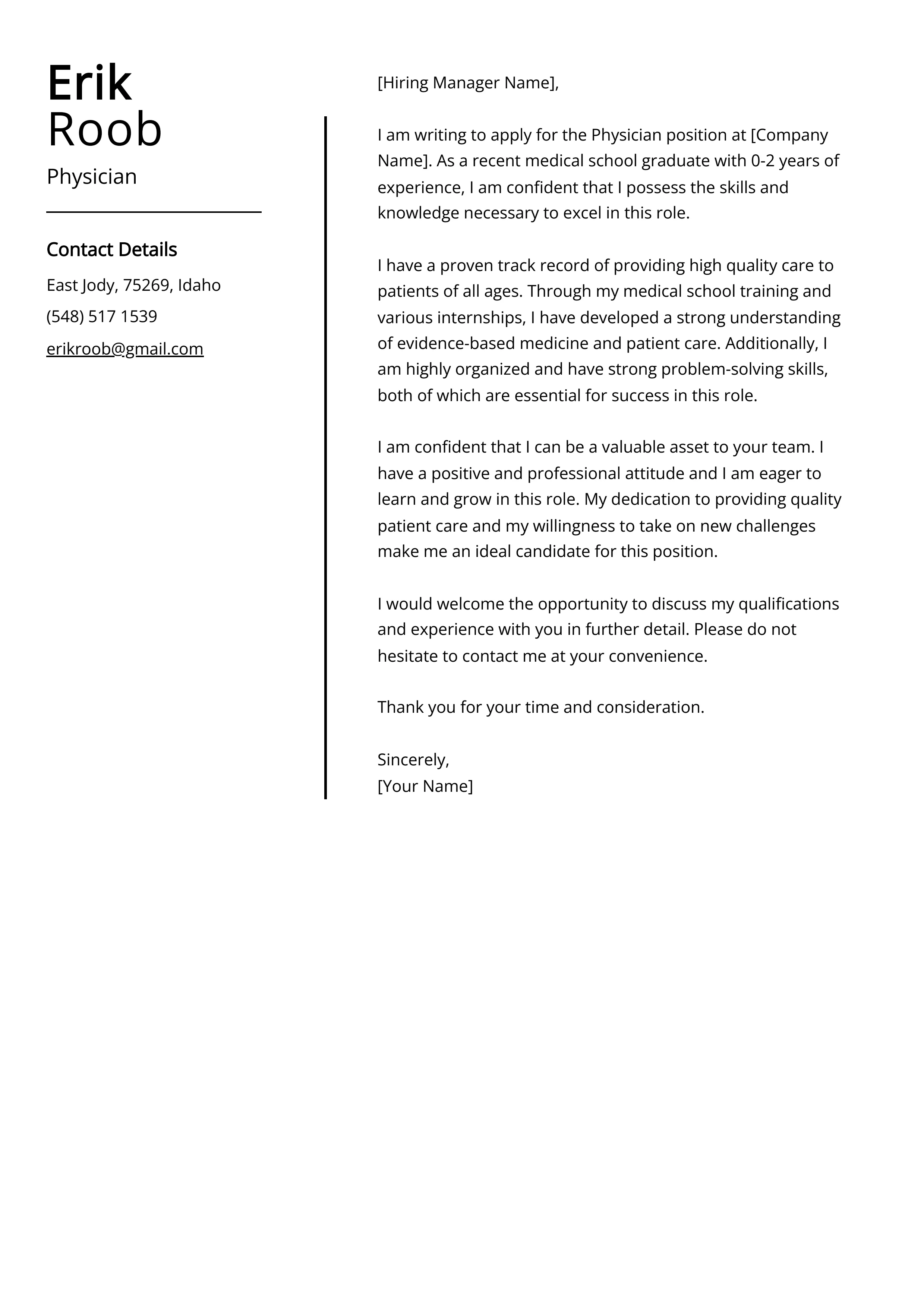
Several essential elements should be included in your physician cover letter to ensure it effectively communicates your qualifications. Begin with a professional header, including your name, contact information, and the date. Address the letter to the hiring manager by name, if possible, showing that you’ve done your research. In the opening paragraph, clearly state the position you’re applying for and how you learned about the opportunity. Highlight your relevant skills, experience, and achievements in the body paragraphs, using specific examples and quantifying your accomplishments. Explain why you’re interested in the specific organization and what you hope to contribute. Close with a strong concluding paragraph, reiterating your interest and thanking the hiring manager for their time and consideration. Include a call to action, such as expressing your availability for an interview and provide a means to contact you. Always proofread the letter for errors before submitting.
The Opening and Closing Statements
The opening and closing statements of your cover letter are crucial for making a strong impression. The opening should immediately grab the reader’s attention and clearly state the position you’re applying for. Briefly mention how you learned about the opportunity and express your enthusiasm for the role. In the opening, try to make a connection with the reader. The closing should reiterate your interest in the position and thank the hiring manager for their time and consideration. Reiterate your key qualifications or highlight what you hope to contribute to the organization. End with a call to action, such as stating your availability for an interview and providing your contact information. Avoid generic phrases. The opening and closing statements are your opportunity to show personality and convey your genuine interest. A well-crafted opening and closing will make your cover letter more memorable.
Common Mistakes to Avoid in Physician Cover Letters
Several common mistakes can undermine your physician cover letter. Avoid using generic templates that aren’t tailored to the specific job or organization. Ensure your letter is free of grammatical errors, spelling mistakes, and typos. Do not simply restate your resume; provide additional context and insights. Avoid being overly formal or using jargon that the hiring manager may not understand. Don’t focus solely on what you want; instead, emphasize what you can offer the organization. Avoid rambling or being too wordy; keep your letter concise and to the point. Do not include irrelevant information or personal details. Never submit a cover letter without proofreading it carefully. Avoiding these common mistakes will significantly improve the quality of your cover letter and increase your chances of success.
Proofreading and Editing Your Cover Letter
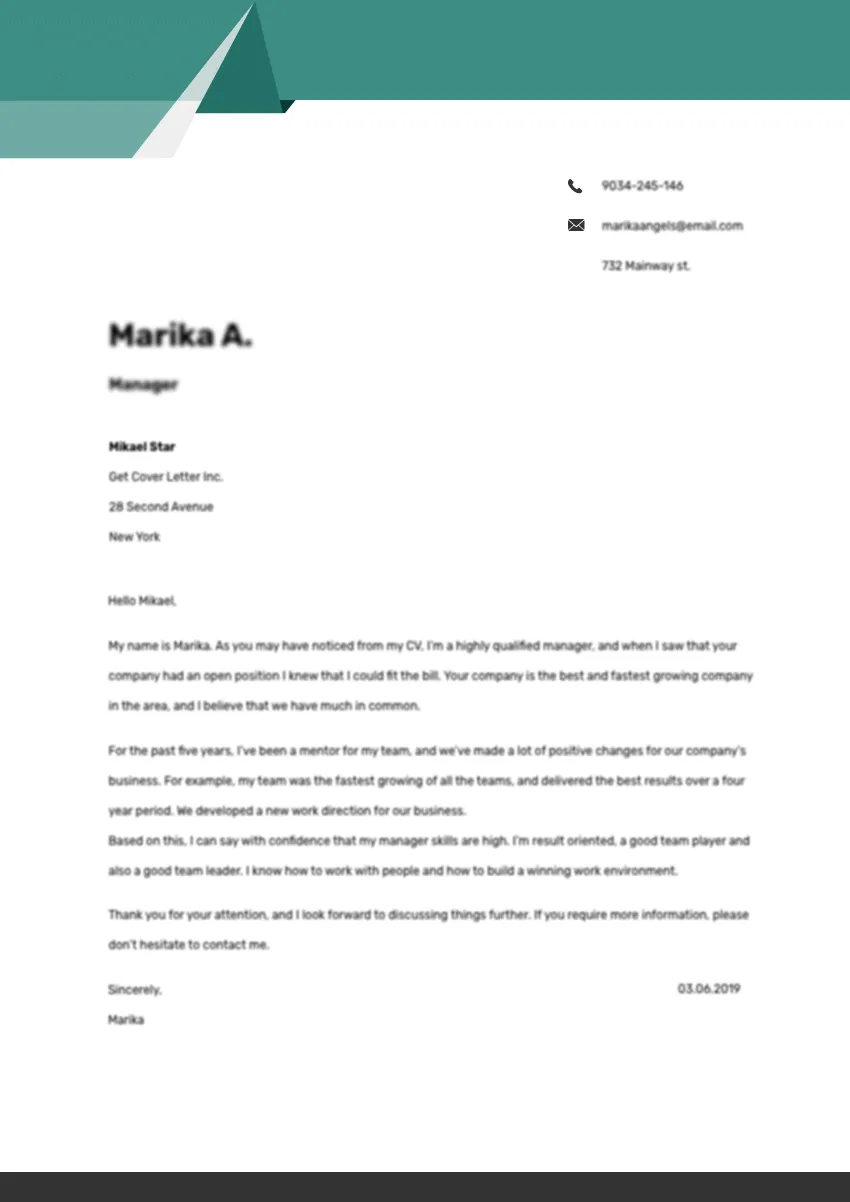
Proofreading and editing your cover letter is essential for ensuring it presents you in the best possible light. After you’ve written your cover letter, take a break and then review it with a fresh perspective. Check for grammatical errors, spelling mistakes, and punctuation errors. Ensure that your sentences are clear, concise, and easy to understand. Verify that your contact information is accurate. Make sure you’ve used the correct name and title of the hiring manager. Read your cover letter aloud to identify any awkward phrasing or unclear sentences. Ask a trusted friend, colleague, or career counselor to review your cover letter for feedback. A second pair of eyes can often catch errors you might have missed. Thoroughly proofreading and editing your cover letter will improve your credibility and show your attention to detail, greatly increasing your chances of making a positive impression.
Examples of Effective Physician Cover Letters
Reviewing examples of effective physician cover letters can provide valuable insight into how to structure and format your own letter. Look for examples that highlight relevant skills and experience, showcasing achievements with specific examples. Analyze the opening and closing statements to see how the candidates express their enthusiasm and professionalism. Pay attention to how they tailor their letters to the specific job and organization. Notice the use of keywords and phrases from the job description. Study the formatting and layout of the letter, paying attention to font, spacing, and organization. Look for examples that demonstrate strong writing skills and a clear communication style. You can find examples online through career websites or by searching for cover letter templates for physicians. Use these examples as a guide, but always customize your own cover letter to reflect your unique qualifications and the specific requirements of the job.
Key Takeaways from Successful Cover Letters
Several key takeaways can be derived from successful physician cover letters. Tailoring is crucial; each cover letter should be customized to the specific job and organization. Strong opening and closing statements are vital for making a positive impression. Highlighting your skills, experience, and accomplishments with specific examples is essential. Quantifying your achievements whenever possible can further strengthen your application. Demonstrate your understanding of the employer’s needs and explain why you are the ideal candidate. Proofreading and editing are non-negotiable for ensuring accuracy and professionalism. A well-written cover letter shows that you’re prepared, enthusiastic, and genuinely interested in the opportunity. By following these key takeaways, you can create a cover letter that effectively showcases your qualifications and increases your chances of landing an interview.
How to Follow Up After Submitting Your Cover Letter
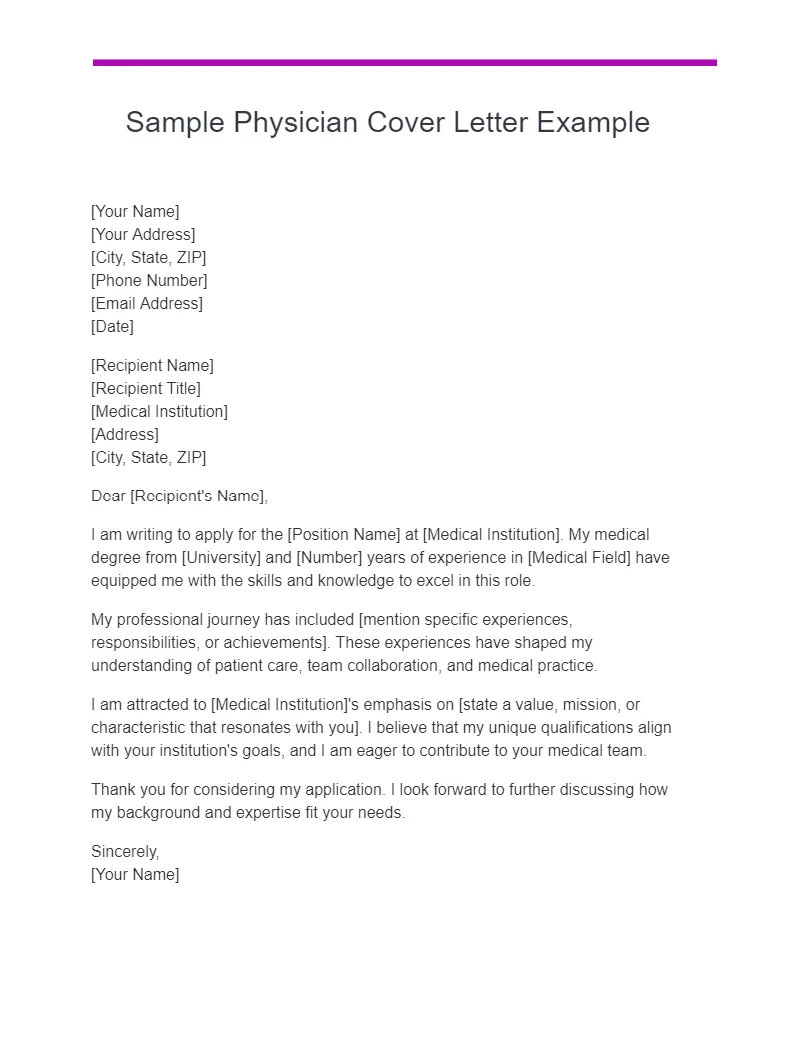
Following up after submitting your cover letter is a strategic step in the job application process. Send a thank-you email to the hiring manager within a week of submitting your application, reiterating your interest in the position and expressing your appreciation for their time. Briefly restate your qualifications and mention any specific aspects of the role that particularly appeal to you. If you haven’t heard back within two to three weeks, you can send a follow-up email to inquire about the status of your application. Keep your follow-up email concise and professional, and avoid being overly persistent. You can also reach out to the hiring manager by phone, but only do so if you are comfortable and if it aligns with the organization’s culture. Be polite, professional, and persistent. Following up demonstrates your continued interest and commitment to the role, and it can help keep your application top of mind.
